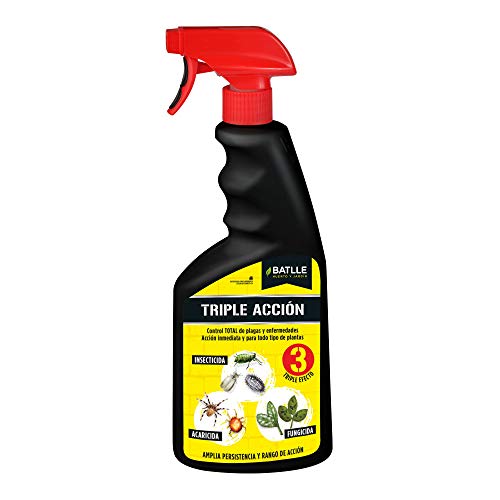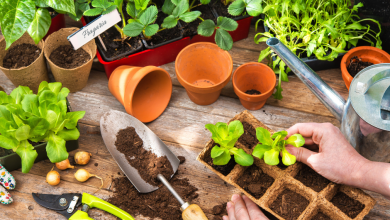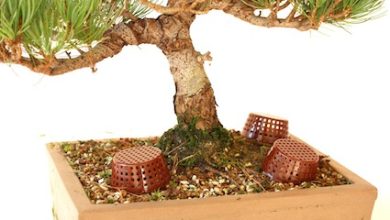Musk Thistle: [Cultivation, Irrigation, Care and Problems]

 It has been classified as one of the most invasive species in the world due to its potential to spread and adapt to different soils and climates.
It has been classified as one of the most invasive species in the world due to its potential to spread and adapt to different soils and climates.
However, although they can be invasive in non-native regions, most thistle species are part of specific ecological niches that turn out to be useful and beneficial to humans.
For example, it has been used in traditional medicine to stimulate liver function, as well as to reduce fevers, purify the blood and prevent atherosclerosis. In addition, they are also used to curdle milk and as an edible plant.
Musk thistle is a very attractive plant for pollinating species because its flowers emit a characteristic musky odor.
Important points when sowing mother-in-law’s seat:
- Scientific name: Carduus nutans.
- Common name: Musk thistle, pendant thistle, red thistle.
- Height: 20 centimeters to 1 meter.
- Light Need: Full sun.
- Temperature: Warm and temperate climates (7ºC to 23ºC).
- Irrigation: Moderate.
- Fertilizer: homemade organic matter such as Compost.
What characteristics does musk thistle have?
 Musk thistle is a herbaceous plant, annual in warm climates or biennial in more temperate climates.
Musk thistle is a herbaceous plant, annual in warm climates or biennial in more temperate climates.
As a whole, it reaches a height of 15 centimeters to 1 meter, although in some areas it reaches almost 2 meters.
The stems of this plant are erect and spiny. From these equally spiny leaves sprout, narrow, arranged in the form of a rosette, dark green, with whitish edges on the base.
This plant has a purple chapter, made up of numerous flowers, which bloom from June to August. The flower heads are 3 to 6 centimeters in diameter, and each can produce about 1,000 seeds.
When to sow musk thistle?
Musk thistle reproduces itself only by seed, with the help of the wind. This plant normally germinates during winter and early spring. However, germination that occurs from autumn is more likely to survive.
Where to plant musk thistle?
 Musk thistle is typical of Mediterranean climates, but can be grown in a wide range of conditions as long as it has mild temperatures, between 7ºC to 23ºC, as well as moisture in the soil.
Musk thistle is typical of Mediterranean climates, but can be grown in a wide range of conditions as long as it has mild temperatures, between 7ºC to 23ºC, as well as moisture in the soil.
This thistle should be located in full sun, on bare soil, open pastures or in places with little vegetation, where there are no barriers that prevent the passage of light. Otherwise, darkness will induce seed dormancy.
Although it usually grows in the ground, it is possible to grow it in pots outside, so that it can enjoy the natural conditions necessary to develop properly.
How to prepare the land?
Musk thistle is a species that reproduces naturally in limestone or lime-enriched soils, as well as in sandy and stony terrain.
However, it thrives in deep, well-drained, moderately moist soils with high levels of nitrogen and phosphates. Likewise, it has preference for substrates with neutral to acidic pH between 5.5 to 8.

Thistle is a nitrophilous plant, so enriching the soil with nitrogen and phosphorous can be helpful. This is possible by adding compost, earthworm humus, coffee beans, eggshells, wood ashes, among other elements.

How do we water musk thistle?
 This species has specific requirements in terms of water supply.
This species has specific requirements in terms of water supply.
During the germination period, only what is necessary should be applied so that the soil is fairly dry. If it becomes waterlogged, seed dormancy will be induced.
On the other hand, moderate and regular watering is needed once the seed has already germinated. If the soil is allowed to dry out, the little seedling will not develop.
How often do we water musk thistle?
The amount and frequency of irrigation will depend on the type of soil in which the musk thistle is located. It is usually recommended to apply 1 irrigation every 7 days, however, this must be adapted to the climatic conditions and the needs of the plant.
How to plant a musk thistle step by step?
As mentioned above, musk thistle reproduces only by seed. The steps to sow in this way are shared below:
- In a container, place 2 or 3 musk thistle seeds on a previously moistened universal substrate, or on the garden soil.
- Cover the seeds with a very fine layer of sand or substrate and water abundantly with a water sprayer.
- If it was planted in a pot, place it in a lighted place, at a temperature between 15ºC and 30ºC, and wait 2 to 3 weeks for it to germinate.
- Apply frequent and moderate watering until a couple of leaves sprout.
- As soon as the thistle has grown 10 to 15 centimeters, gradually move it into direct sunlight and finally transplant to the desired location.
What care does musk thistle need?
 Musk thistle is a plant that does not need care to grow. It only needs sunlight to grow, as well as avoiding extremely humid and dry environments.
Musk thistle is a plant that does not need care to grow. It only needs sunlight to grow, as well as avoiding extremely humid and dry environments.
Likewise, it is necessary to be careful with the reproduction of this plant since it may be prohibited in the region and cause an invasion in the fields of cultivation and grazing.
Currently there are different methods of control, whether biological, chemical or mechanical. However, it is necessary to know the phytosanitary situation of this species in the area before deciding to cultivate it in the garden.
What pests and diseases affect musk thistle?
Musk thistle is a highly resistant plant to common diseases and pests. However, being considered an invasive plant, biological control agents have been sought to keep them under control.
Among the pests are Rhinocyllus conicus, Trichosirocalus horridus, Urophora solstitialis, and Ceutorhynchus Trimaculatus; all species of Europe, which feed on the flowers, leaves and roots of the plant, causing much damage.

Among the diseases, one can be found caused by the fungus Puccinia cardorum. These organisms produce small yellow spots and rust pustules that harbor thousands of spores, causing serious damage to the plant.
References
- https://www.cabi.org/isc/datasheet/11259#tosummaryOfInvasiveness
- http://www.tellerparkcd.org/uploads/2/6/5/2/26529371/musk_thistle.pdf
- https://www.invasive.org/weedcd/pdfs/asianv1/carduus.pdf
- https://www.plantlife.org.uk/uk/discover-wild-plants-nature/plant-fungi-species/musk-thistle
- https://www.asturnatura.com/especie/carduus-nutans.html
- https://www.fs.fed.us/database/feis/plants/forb/carnut/all.html
- https://www.floraitaliae.actaplantarum.org/viewtopic.php?t=13982
- https://wiki.bugwood.org/Carduus_nutans



![Photo of Transplant Peppermint: [Conditions, Time, Tools and Steps to follow]](https://www.complete-gardening.com/wp-content/uploads/2022/08/transplant-peppermint-conditions-time-tools-and-steps-to-follow-390x220.jpg)
